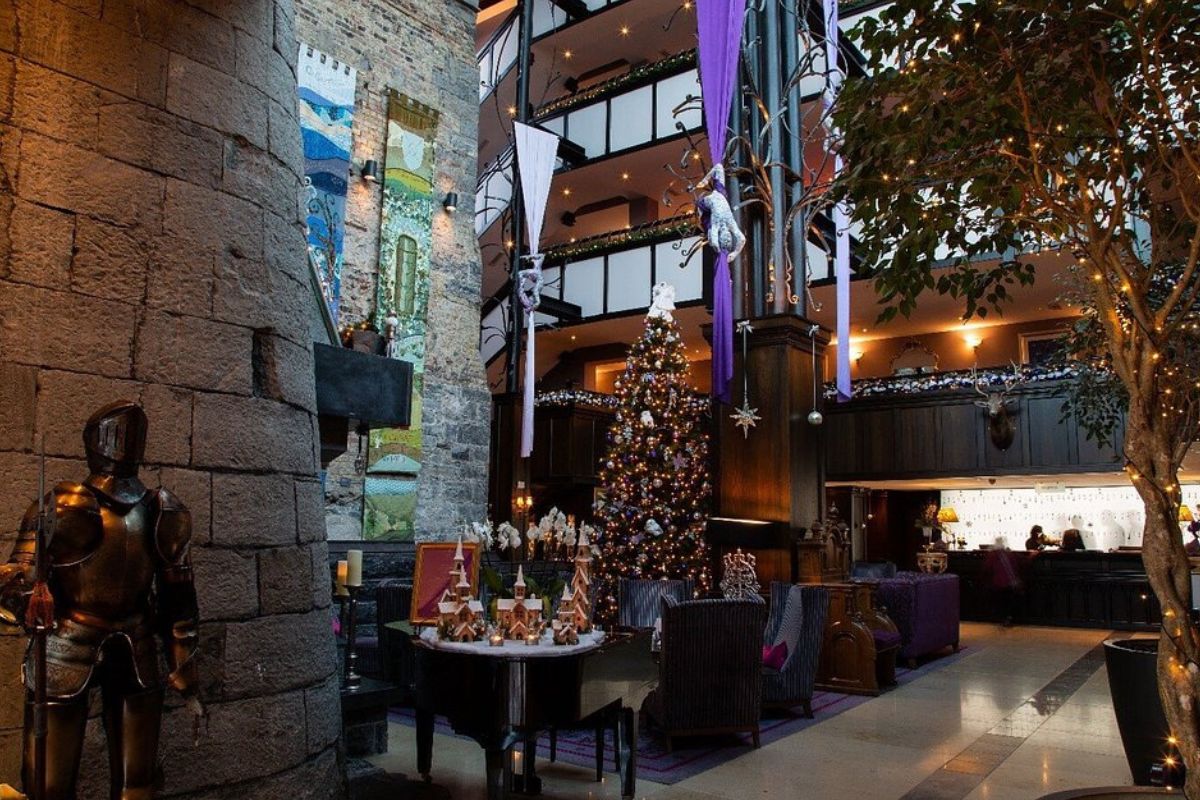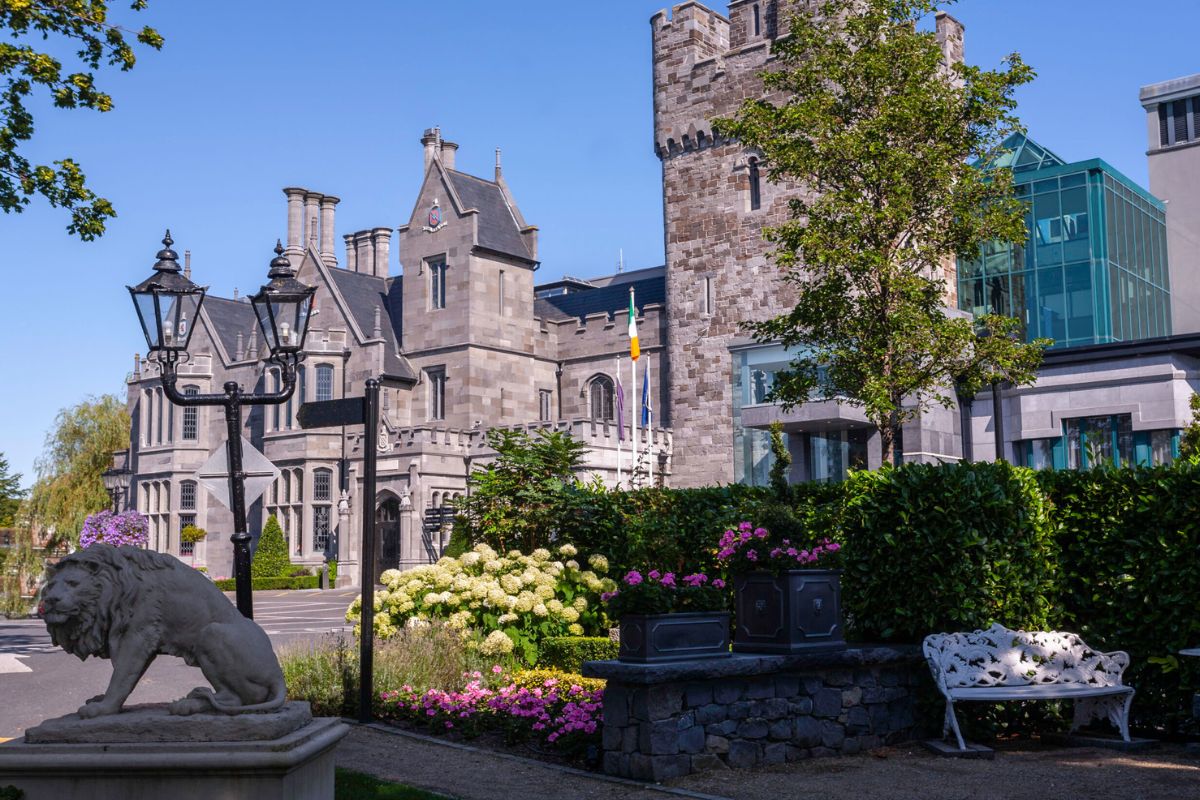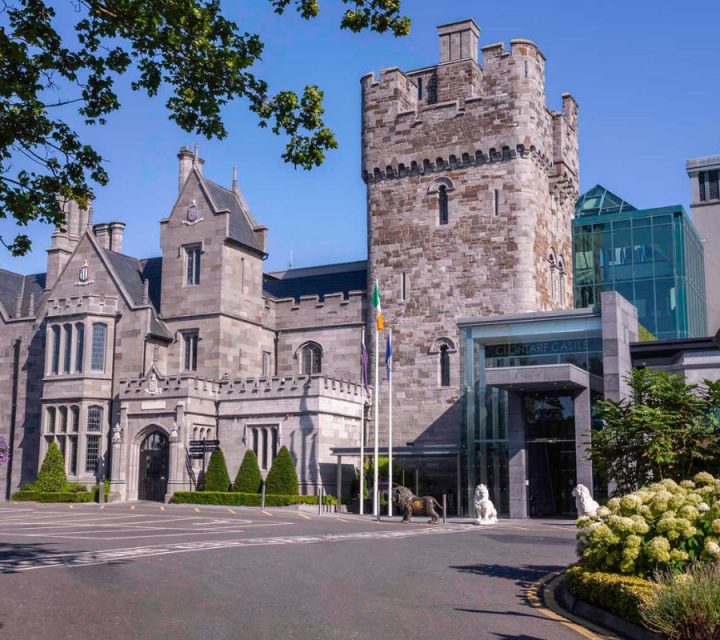Clontarf Castle
Clontarf Castle is a historic landmark just outside Dublin, Ireland. Its origins trace back to the 12th century. Built as a defensive fortress, it has seen centuries of conflict and change. Today, it combines medieval charm with modern luxury. The castle attracts visitors eager to explore Ireland’s rich history. Its striking Gothic Revival architecture makes it one of Dublin’s most distinctive heritage sites.
The castle also connects to the famous Battle of Clontarf in 1014. Although rebuilt many times, it stands on that historic ground. Visitors enjoy not only its dramatic history but also its warm hospitality. Clontarf Castle remains a cherished part of Ireland’s cultural legacy.
Location of Clontarf Castle
Clontarf Castle sits in the coastal suburb of Clontarf, northeast of Dublin city center. This location combines urban convenience with seaside tranquility. Clontarf itself is known for its long promenade and scenic bay views. The neighborhood is quiet, with leafy streets and a welcoming atmosphere. The castle is surrounded by landscaped gardens and mature trees. Nearby, you’ll find St. Anne’s Park, one of Dublin’s largest public parks. Visitors can walk along Clontarf Road and admire views of Howth Head and Bull Island. Bull Island is a UNESCO biosphere reserve, popular with nature lovers.
Its proximity to Dublin makes visiting easy. Dublin Port and Connolly Station are nearby, offering good transport links. Many cafes, pubs, and shops in Clontarf give visitors a taste of Irish life. You can enjoy both the city and the coast when staying here.

History of Clontarf Castle
The castle stands on the site of the 1014 Battle of Clontarf. That battle saw Brian Boru defeat Viking forces and secure Irish rule. A permanent fortification appeared here in the 12th century. Hugh de Lacy granted the land to the Knights Templar, who built the first castle.
After the Templars’ dissolution, the property changed hands several times. In 1640, the Vernon family acquired Clontarf Castle. They kept it in the family for almost 300 years. Over time, the Vernons rebuilt and extended the castle into a grand residence. In the 18th century, they added Georgian windows and elegant interiors. By the early 19th century, the castle had fallen into disrepair. In 1837, architect William Vitruvius Morrison designed a new Gothic Revival structure. That design gave the castle its current romantic appearance. The battlements and turrets you see today date from this period. The Vernons eventually sold the property in the 20th century.

Current Status
Clontarf Castle now operates as a four-star boutique hotel. Guests can experience history while enjoying modern comfort. The interiors feature original stone walls, stained glass windows, and ornate fireplaces. Stylish décor and modern amenities complete the experience. Many rooms offer views of the gardens or surrounding neighborhood. For history lovers, guided tours are available on request. Informative displays tell the story of the castle and its many owners. Guests can stroll through the landscaped gardens and enjoy the peaceful setting. Seasonal events celebrate Irish traditions and festivals, adding to its charm.
The castle is open year-round and maintained with great care. Its staff are knowledgeable and happy to share its stories. Whether you come for a weekend stay, a special event, or simply to explore, Clontarf Castle offers a memorable experience. It stands as a proud example of Ireland’s enduring history and hospitality.
Admission
Community features
Castle features
Video
Location
Official website
Featured listings














